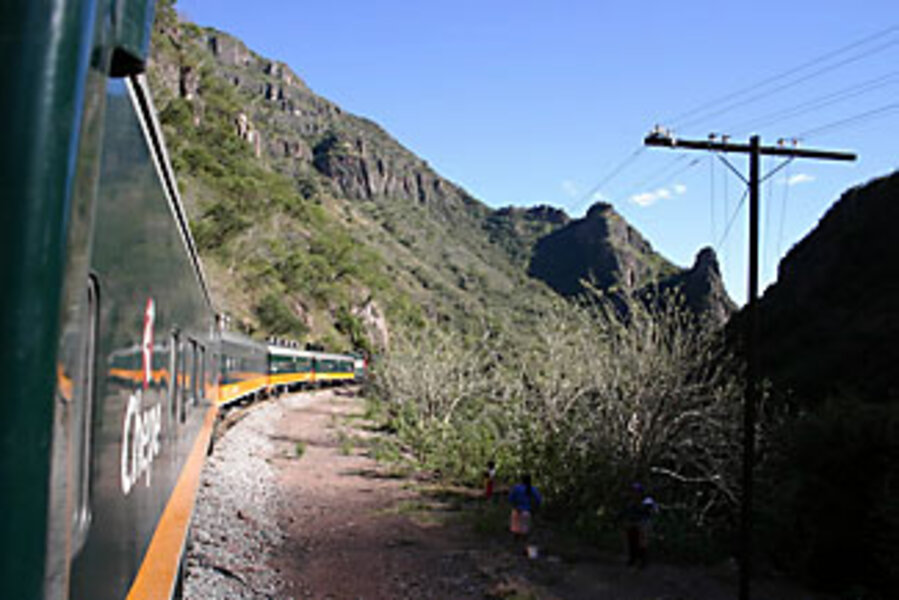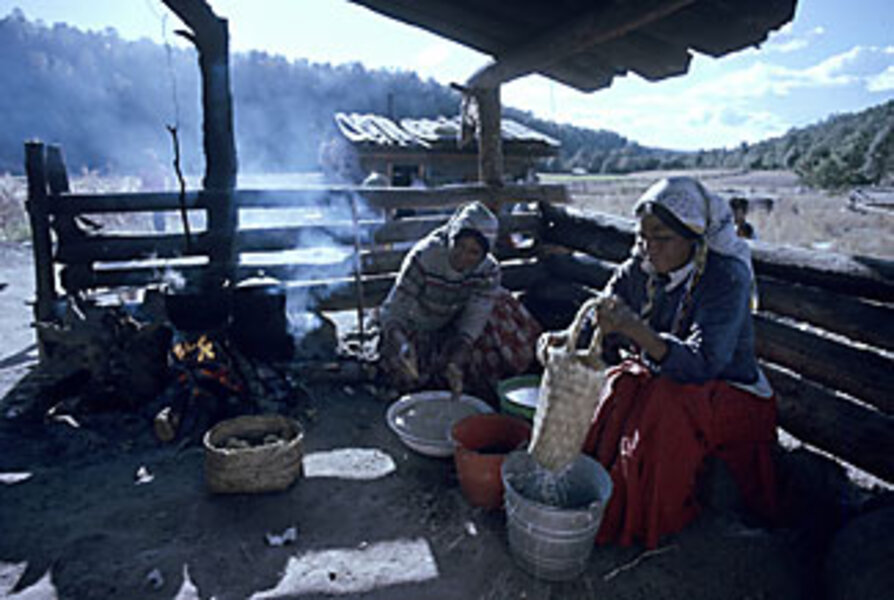The many faces of Mexico
Loading...
| Chihuahua City, Mexico
When we first got to Chihuahua City, my husband said it reminded him, more than any city we'd visited in Mexico, of the United States. The streets were broad; cars whizzed by. Fast-food outlets were at every turn.
I protested. After all, this is a seat of Mexico's history, boasting the home of Pancho Villa, where much of the Mexican Revolution was strategized. But after browsing the rows of cowboy boots in shops downtown, you could be forgiven for mistaking this city for any similar-size metropolis in Texas.
The comparison didn't really strike me at the time. But it was something I'd come back to 10 days later, at the end of our trip in Mazatlan, which seemed the most "Mexican" town we'd seen.
The highlight of our vacation was supposed to be the Copper Canyon railway, the 400-mile trip that takes passengers through some of the most awesome canyon scenery in the world. Chihuahua and Mazatlan were just the starting and ending points, mere bookends.
But by the time we finished, we realized that, inadvertently, we'd gotten such a broad sampling of Mexico – cowboy country, the highlands and indigenous culture that flourish there, and beach life – that the Copper Canyon railway became just another mode of transportation on this journey past Mexico's many faces.
We spent only a few days in Chihuahua City, but that is more than most do. Tourists typically breeze through. But it's worth some time, if only to absorb traditional Mexican society. Men in cowboy hats stand in the central plaza all day, chatting and watching others pass by. Virtually everything is closed on Sundays. Chihuahua City has been a trading post for the cattle industry throughout much of its history. As foreign factories have come to dominate its economy, it has grown, and urban blight has followed. But it still exudes an aura of colonial provinciality that is hard to sense in other such cities dominated by tourism.
One tourist site that is a definite highlight, especially for history enthusiasts, is the Revolution Museum, the former estate of Pancho Villa. It traces the history of this turbulent period of Mexico's history. The most popular exhibit is a 1922 Dodge limousine, complete with bullet holes, in which Villa was assassinated in 1923.
Within hours of leaving the hot desert city of Chihuahua for Copper Canyon, we were on snow-slicked roads in the middle of the mountains. Our first stop was Creel, a logging town at the top of Copper Canyon, about halfway along the rail line. It's also the largest town in this isolated range. Our tour was too rushed, but allowed us to see all the major sites, including the Cusárare Waterfalls and a cluster of rock formations that at various points look like groups of mushrooms or frogs.
But the best part was getting a glimpse of the indigenous people, the Tarahumara, who inhabit the valleys and mountains. They retreated to this area during the Spanish conquest, and over the years were pushed so deep into the mountains that little is known about them today. Their way of life is not easily glimpsed in Creel or along the railway itself, but on day trips from Creel you can visit some of their communities. We visited one in which a group of families lives in a cave.
The next day we queued up to board the Ferrocarril Chihuahua al Pacifico (Chihuahua-Pacific Railway). We made the mistake of trying to do this trip during Easter week, when it's virtually impossible to book seats.
The subject of train availability was a continuing mystery to us. Despite calling the railroad company dozens of times (and being told that tickets had been sold out for a month, even though we'd read that tickets can be purchased only a week in advance), going to the station, and visiting Chihuahua's tourist bureau – we never got a straight answer. So we lined up by the track before the train was due. And everyone – those with tickets and those without – got on. I stopped trying to understand how it works.
The Copper Canyon is stunning. It's the largest canyon system in North America – four times the size of the Grand Canyon. The best view of the numerous gorges is at Divisadero, where you have 15 minutes to get off the train, snap some photos, buy a sandwich, and get back on. Unfortunately, that's the only opportunity to leave the train if you aren't spending the night somewhere along the way.
As the train continues to Los Mochis, 13 hours away, the scenery changes from alpine forest to expansive plains interrupted only by cacti.
The the third leg of our journey was a seven-hour bus ride south along the coast of Sinaloa to the port of Mazatlan. We were told that this is where Mexicans vacation. The beaches were packed with families enjoying picnics on blankets in the sand and playing boisterous games of soccer.
The beaches aren't nearly as nice as in Cancún, the stores not as cosmopolitan as those in Puerto Vallarta. But Mazatlan offers something that I haven't experienced elsewhere in Mexico: the opportunity to combine beach and culture.
During the day we went to the beach. But at night, we'd head back to the historic center where a restored, 19th-century theater presents cultural events year-round. You can also find live jazz or poetry readings.
We gorged on the massive shrimp that the town is famous for: grilled, battered with coconut, breaded, boiled, cold. The weekend was vibrant and, to me, completely "Mexican."
My husband protested. "What does that mean, 'Mexican'?" I felt better equipped to answer after having visited three vastly diverse regions. But then I realized that, in many ways, a trip like this makes the question harder to answer. So it's better to just enjoy it and move on.






